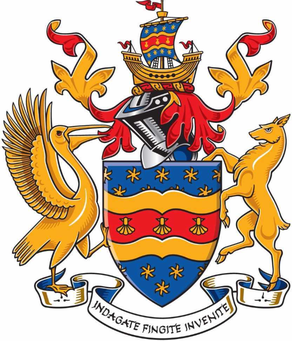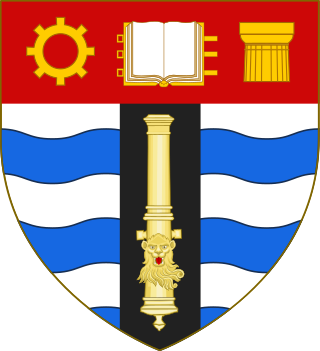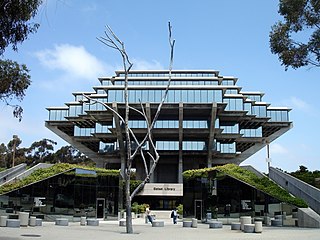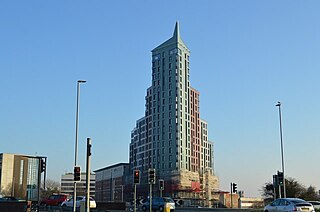
Augusta Ada King, Countess of Lovelace was an English mathematician and writer, chiefly known for her work on Charles Babbage's proposed mechanical general-purpose computer, the Analytical Engine. She was the first to recognise that the machine had applications beyond pure calculation.

The analytical engine was a proposed mechanical general-purpose computer designed by English mathematician and computer pioneer Charles Babbage. It was first described in 1837 as the successor to Babbage's difference engine, which was a design for a simpler mechanical calculator.

Computer science is the study of computation, information, and automation. Computer science spans theoretical disciplines to applied disciplines. Though more often considered an academic discipline, computer science is closely related to computer programming.

Charles Babbage was an English polymath. A mathematician, philosopher, inventor and mechanical engineer, Babbage originated the concept of a digital programmable computer.

John Adam Presper Eckert Jr. was an American electrical engineer and computer pioneer. With John Mauchly, he designed the first general-purpose electronic digital computer (ENIAC), presented the first course in computing topics, founded the Eckert–Mauchly Computer Corporation, and designed the first commercial computer in the U.S., the UNIVAC, which incorporated Eckert's invention of the mercury delay-line memory.

The University of Adelaide is a public research university located in Adelaide, South Australia. Established in 1874, it is the third-oldest university in Australia. The university's main campus is located on North Terrace in the Adelaide city centre, adjacent to the Art Gallery of South Australia, the South Australian Museum, and the State Library of South Australia.

Arena Birmingham is an indoor arena and sporting venue in central Birmingham, United Kingdom. It is owned by parent company the NEC Group. When it was opened in 1991, it was the largest indoor arena in the UK.

The University of Plymouth is a public research university based predominantly in Plymouth, England, where the main campus is located, but the university has campuses and affiliated colleges across South West England. With 18,410 students, it is the 57th largest in the United Kingdom by total number of students.

The University of Greenwich is a public university located in London and Kent, United Kingdom. Previous names include Woolwich Polytechnic and Thames Polytechnic.

Staffordshire University is a public research university in Staffordshire, England. It has one main campus based in the city of Stoke-on-Trent and four other campuses; in Stafford, Lichfield, Shrewsbury and London.

Plymouth railway station serves the city of Plymouth, Devon, England. It is on the northern edge of the city centre, close to the North Cross roundabout. It is the second busiest station in the county of Devon and the largest of the six surviving stations in Plymouth.

The University of Chichester is a public university located in West Sussex, England, which became a university in 2005. Campuses are based in the city of Chichester and the nearby coastal resort of Bognor Regis and an associate campus for commercial music on the Isle of Wight.

Geisel Library is the main library building of the University of California, San Diego. It is named in honor of Audrey and Theodor Seuss Geisel. Theodor is better known as children's author Dr. Seuss. The building's distinctive architecture, described as occupying "a fascinating nexus between brutalism and futurism", has resulted in its being featured in the UC San Diego logo and becoming the most recognizable building on campus.

Bryan Donkin FRS FRAS developed the first paper making machine and created the world's first commercial canning factory. These were the basis for large industries that continue to flourish today. Bryan Donkin was involved with Thomas Telford's Caledonian Canal, Marc and Isambard Brunel's Thames Tunnel, and Charles Babbage's computer. He was an advisor to the government and held in high esteem by his peers.
The University of Pittsburgh's School of Computing and Information is one of the 17 schools and colleges of University of Pittsburgh located on the university's main campus in the Oakland section of Pittsburgh, Pennsylvania, United States. The school was formed in 2017 with a focus on academic programs that teach contextually situated computing in an interdisciplinary manner. The school offers bachelor's, master's, and doctoral degrees as well as certificate programs and houses three departments: Computer Science, Informatics and Networked Systems, and Information Culture and Data Stewardship.
Royal BAM Group nv is a Dutch construction-services business with headquarters in Bunnik, Netherlands. It is the largest construction company based on revenue in the Netherlands.

Cuthbert Corwin Hurd was an American computer scientist and entrepreneur, who was instrumental in helping the International Business Machines Corporation develop its first general-purpose computers.
Higgs and Hill was a major British construction company responsible for construction of many well-known buildings in London.

Hollandsche Beton Groep nv (HBG) was a Netherlands-based construction group founded in 1902. It expanded internationally in the late 20th century, acquiring businesses in the United Kingdom, before being itself acquired by Netherlands competitor Royal BAM NBM to form the Royal BAM Group.

Beckley Point is a private student accommodation building in Plymouth, Devon, United Kingdom. It is owned and operated by Yugo, previously known as the Student Housing Company.






















